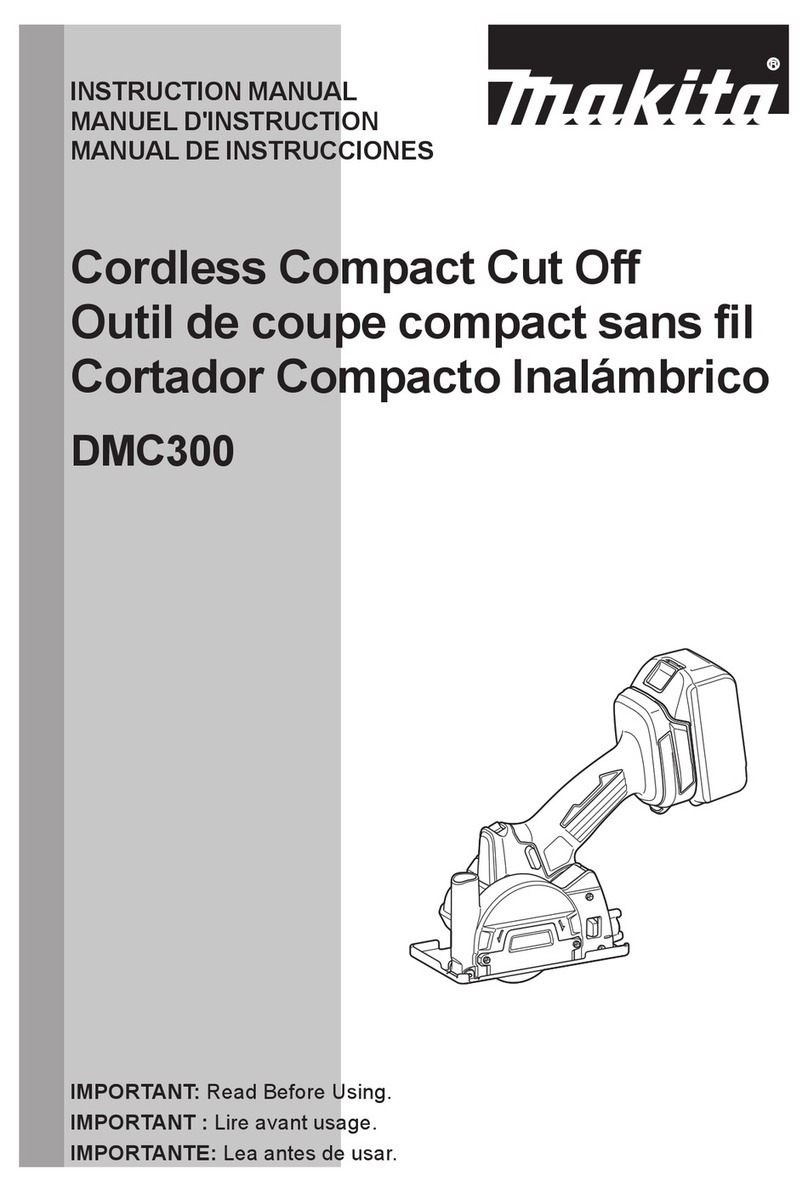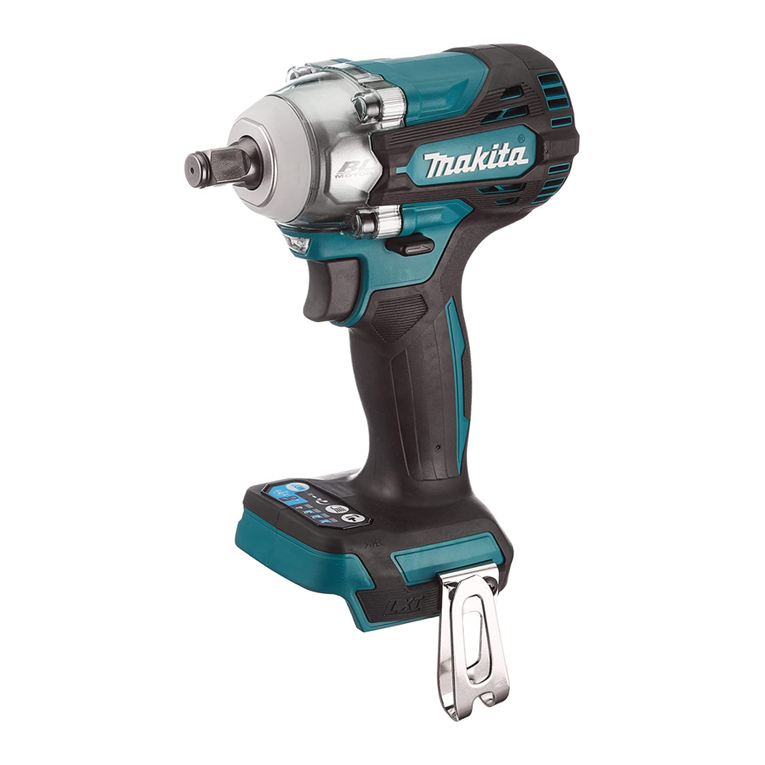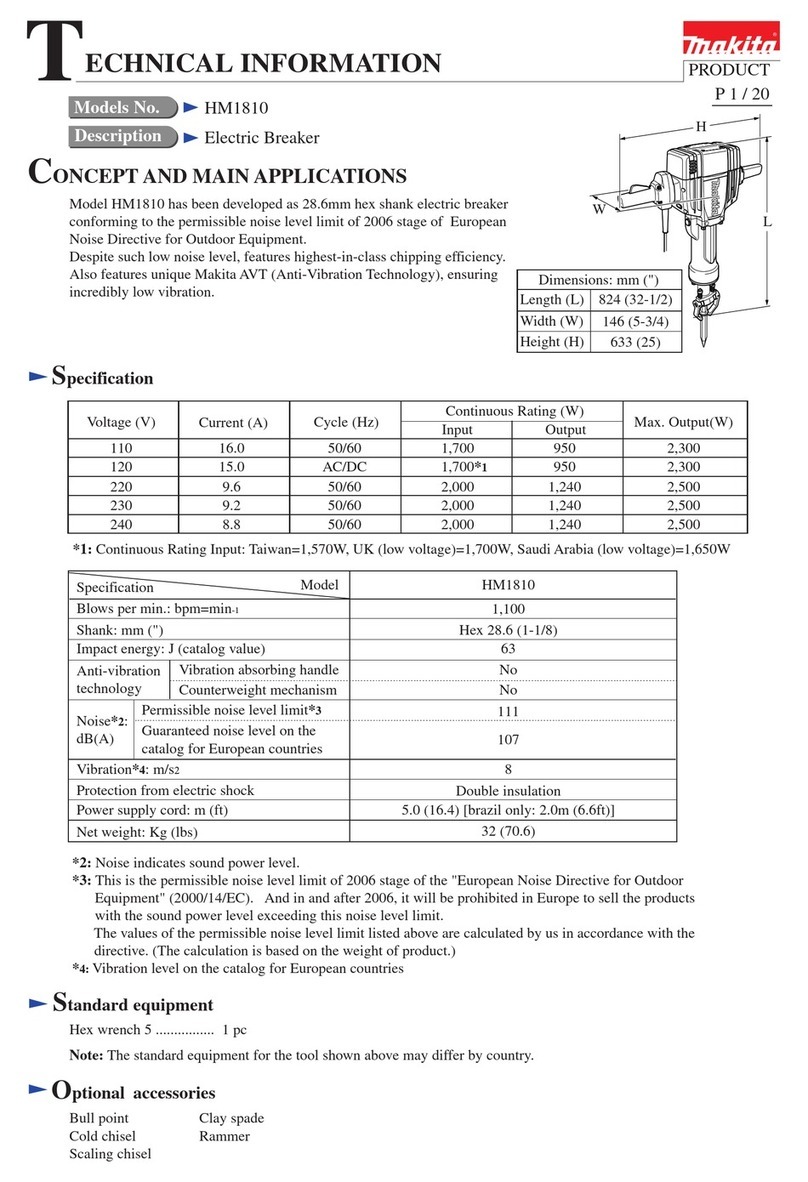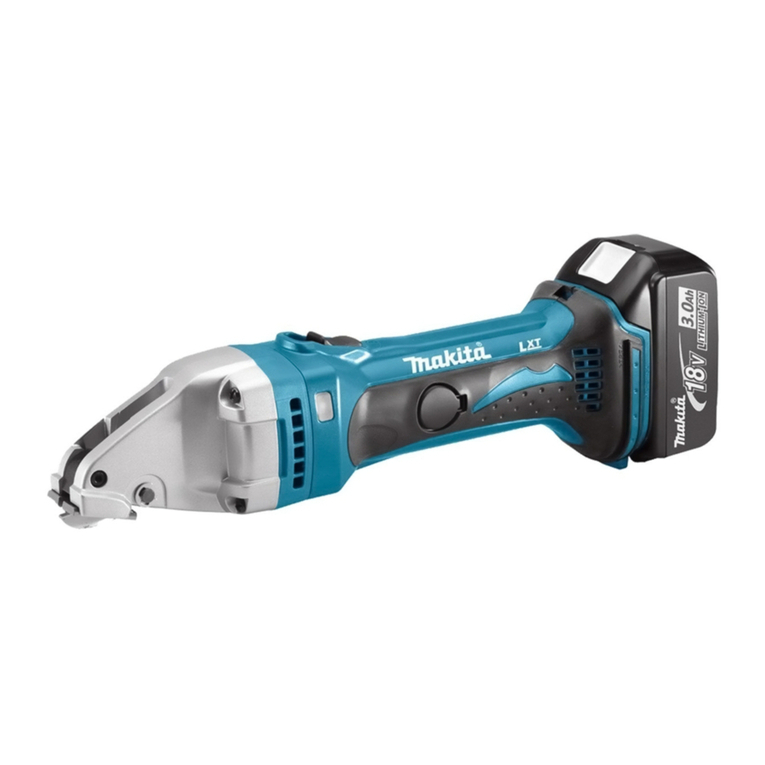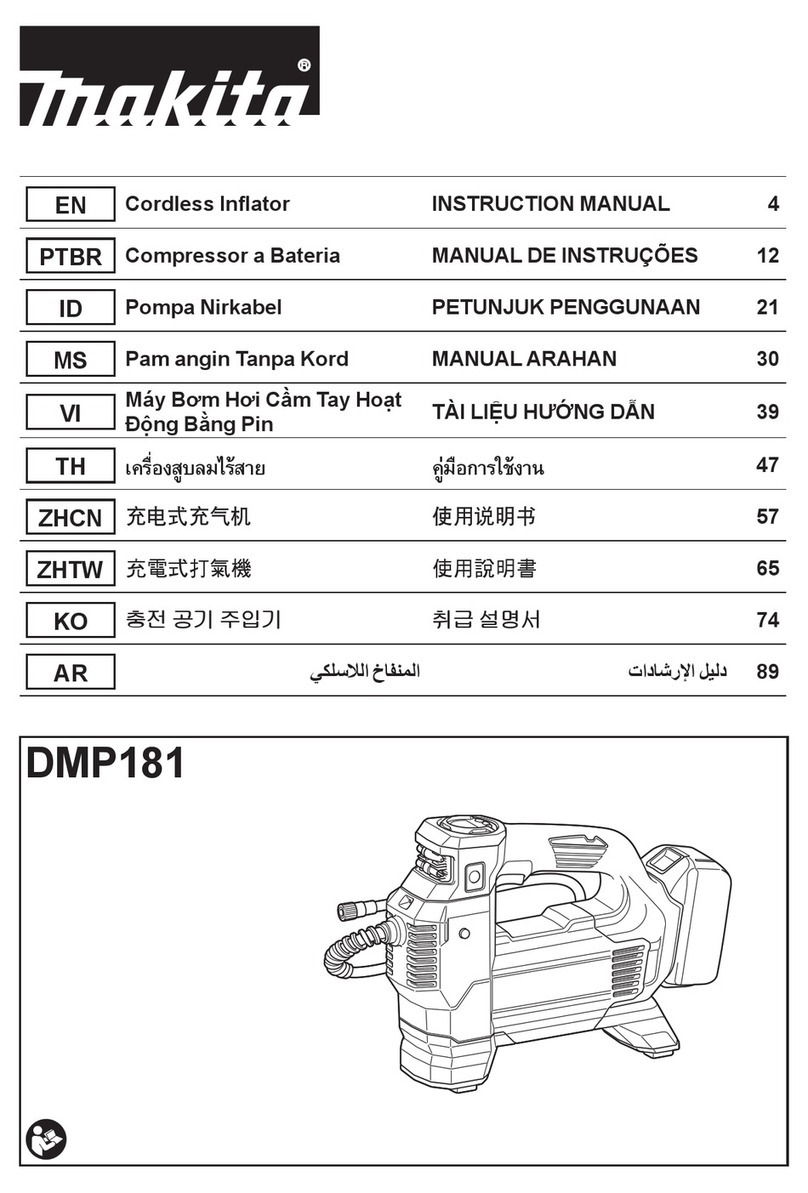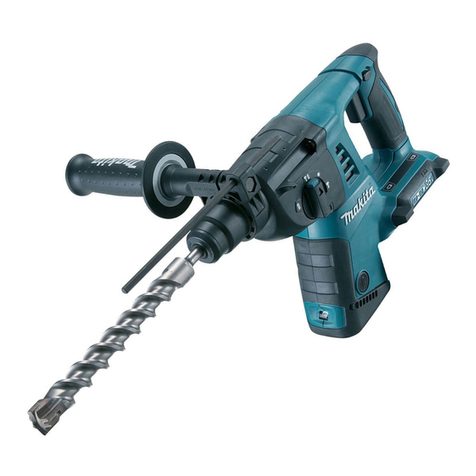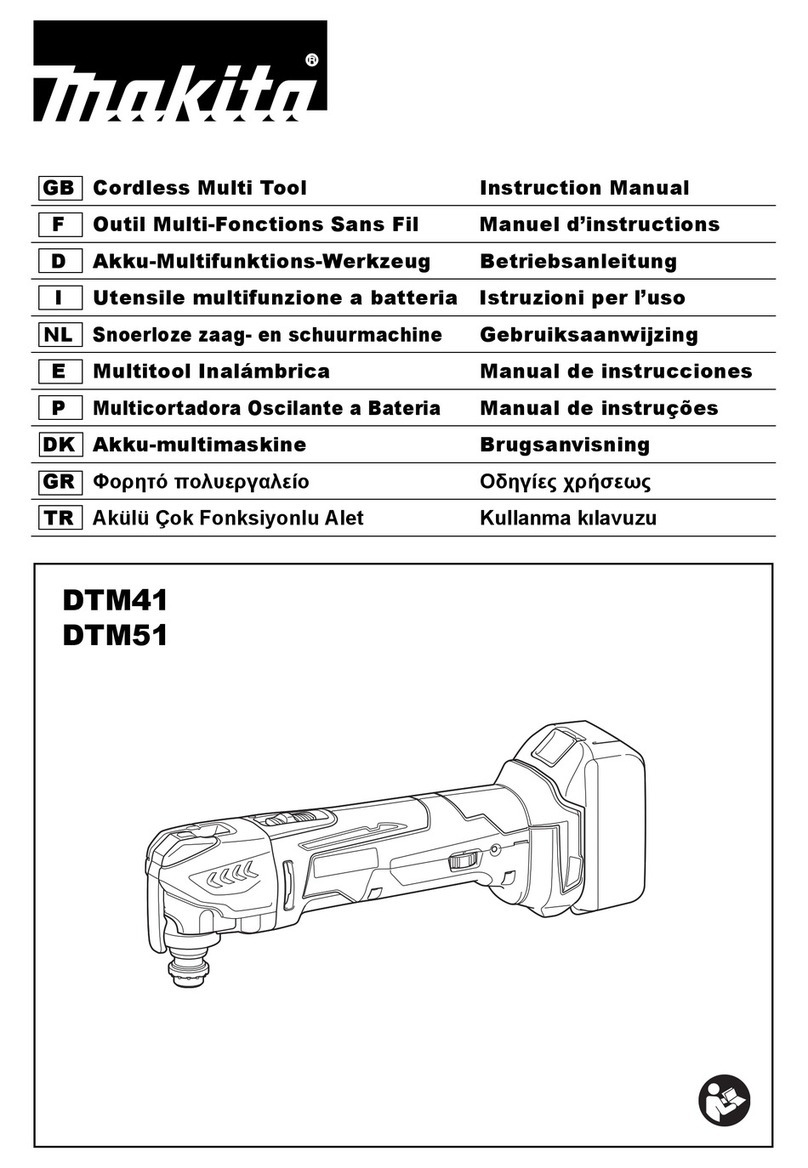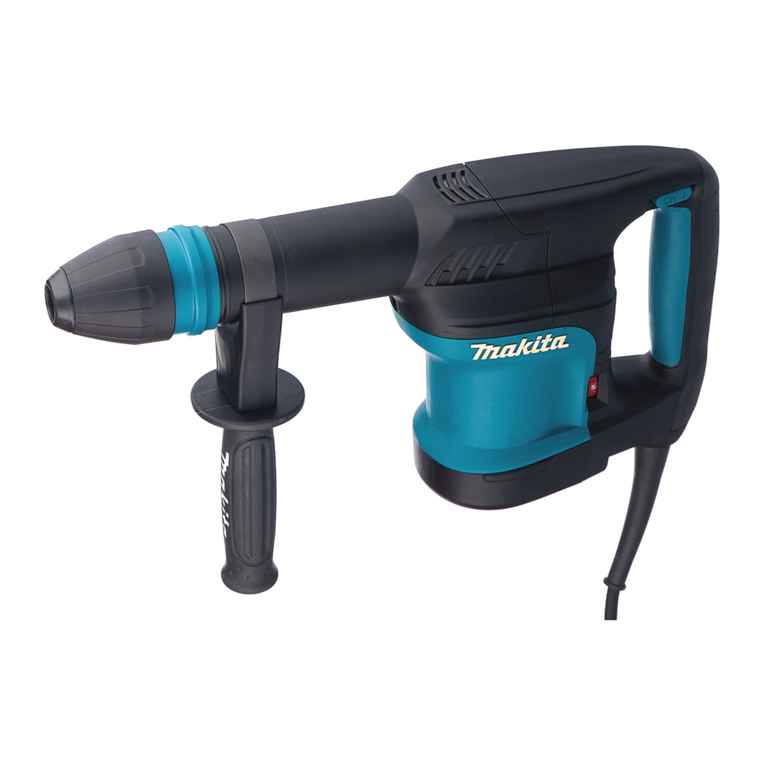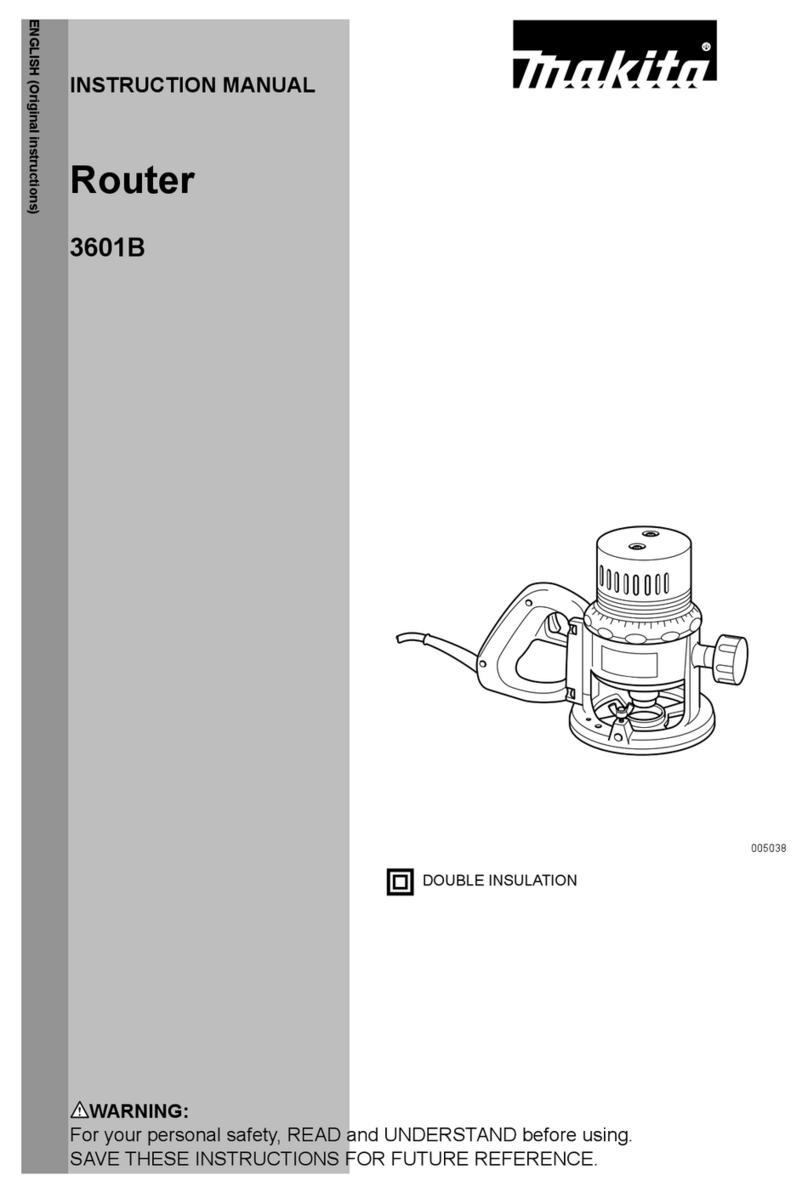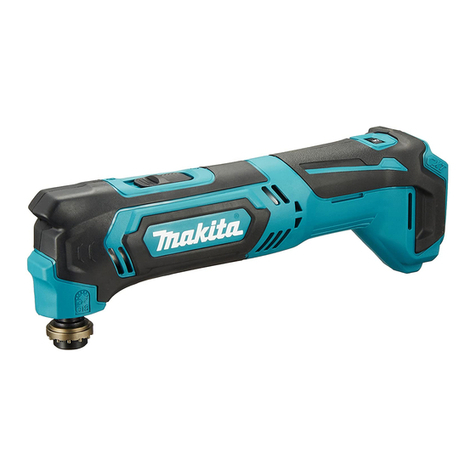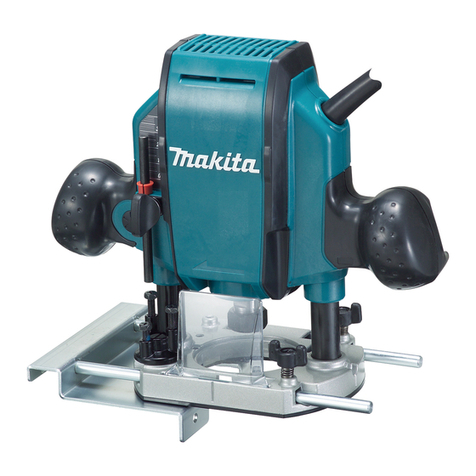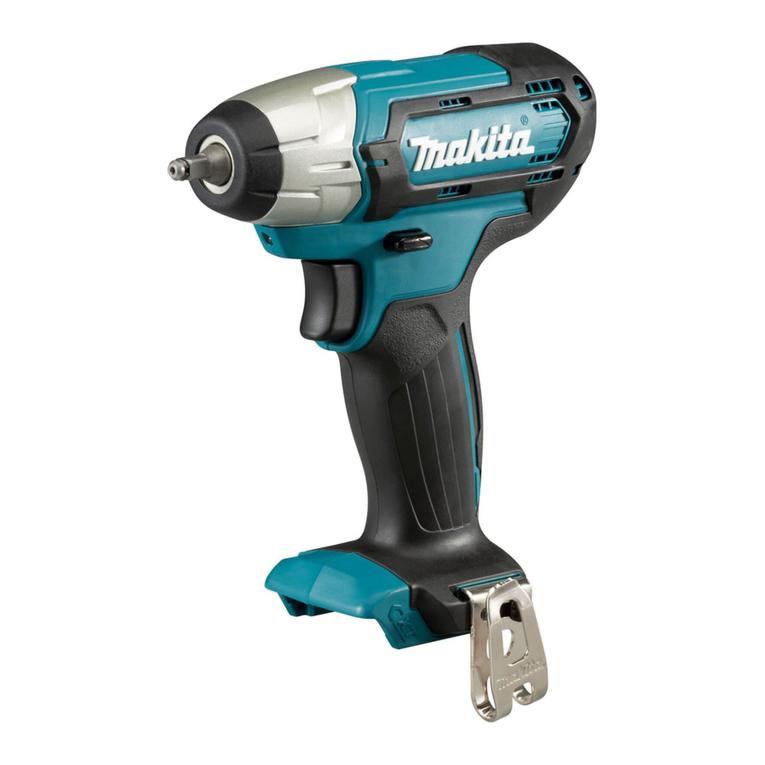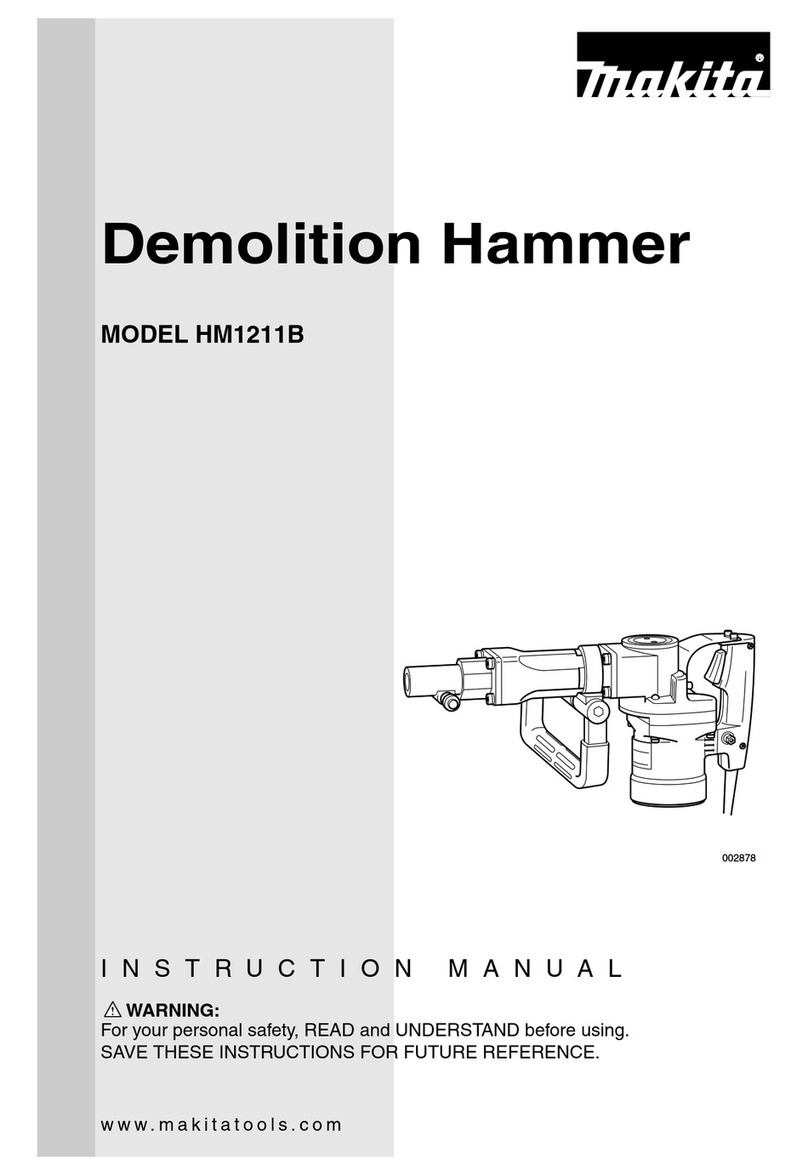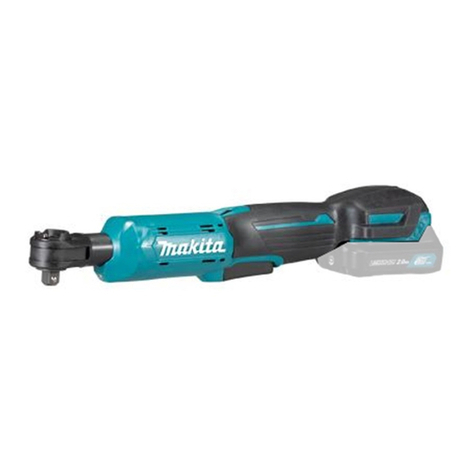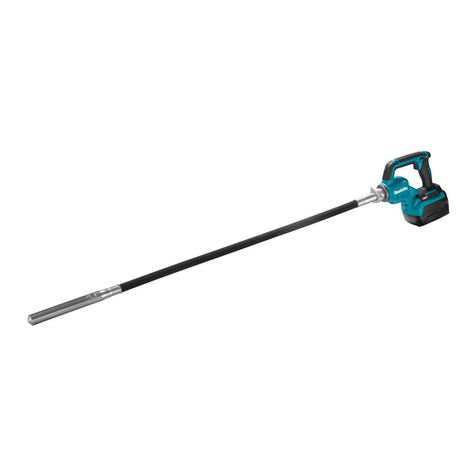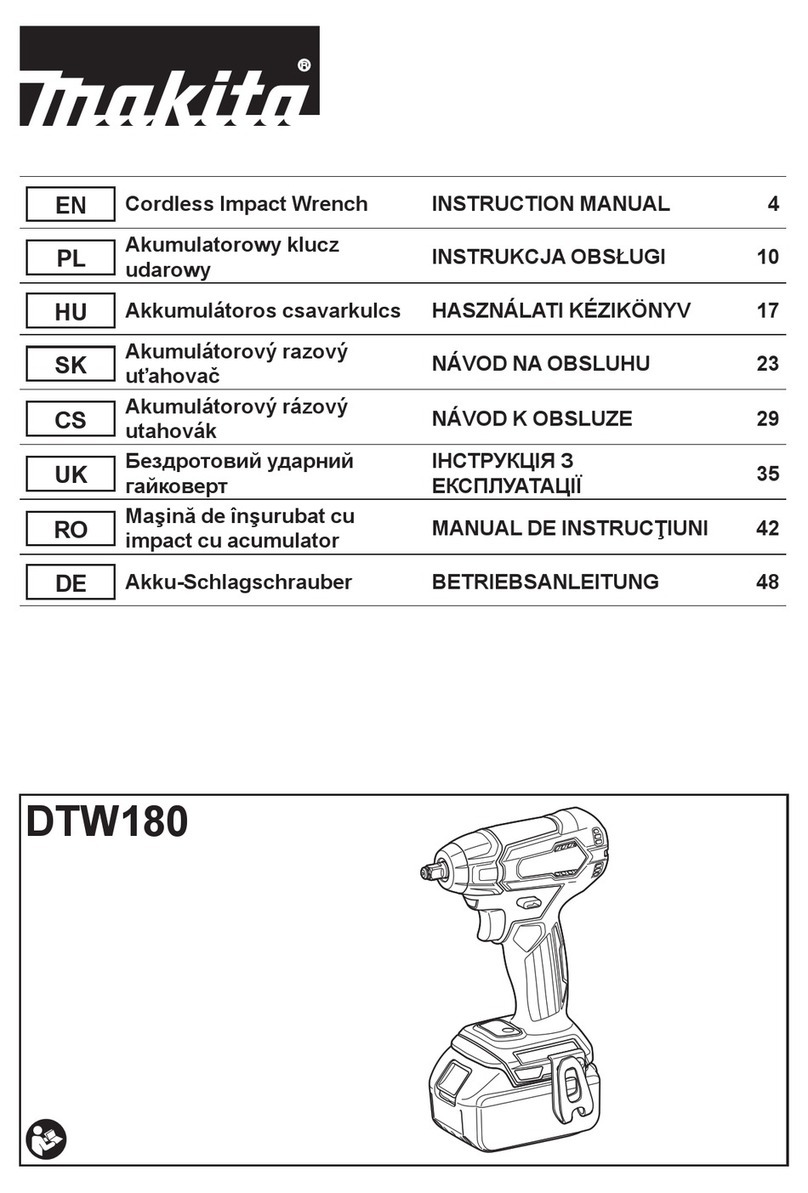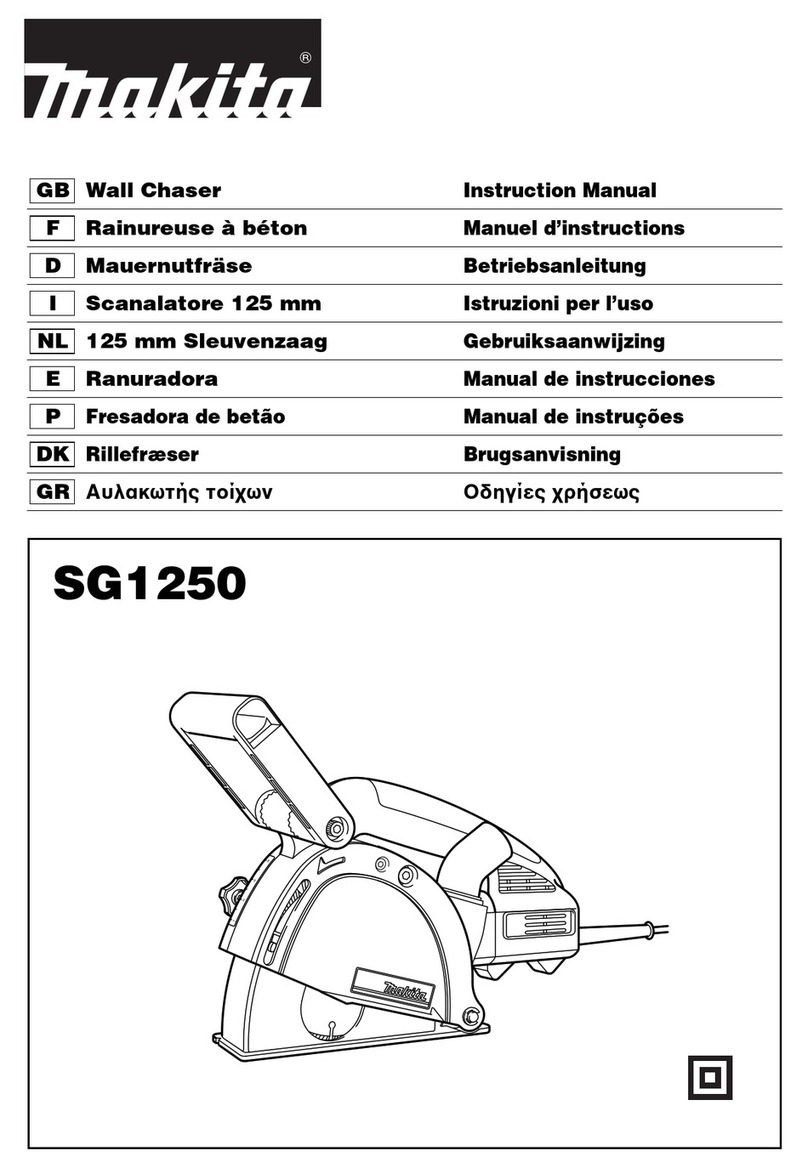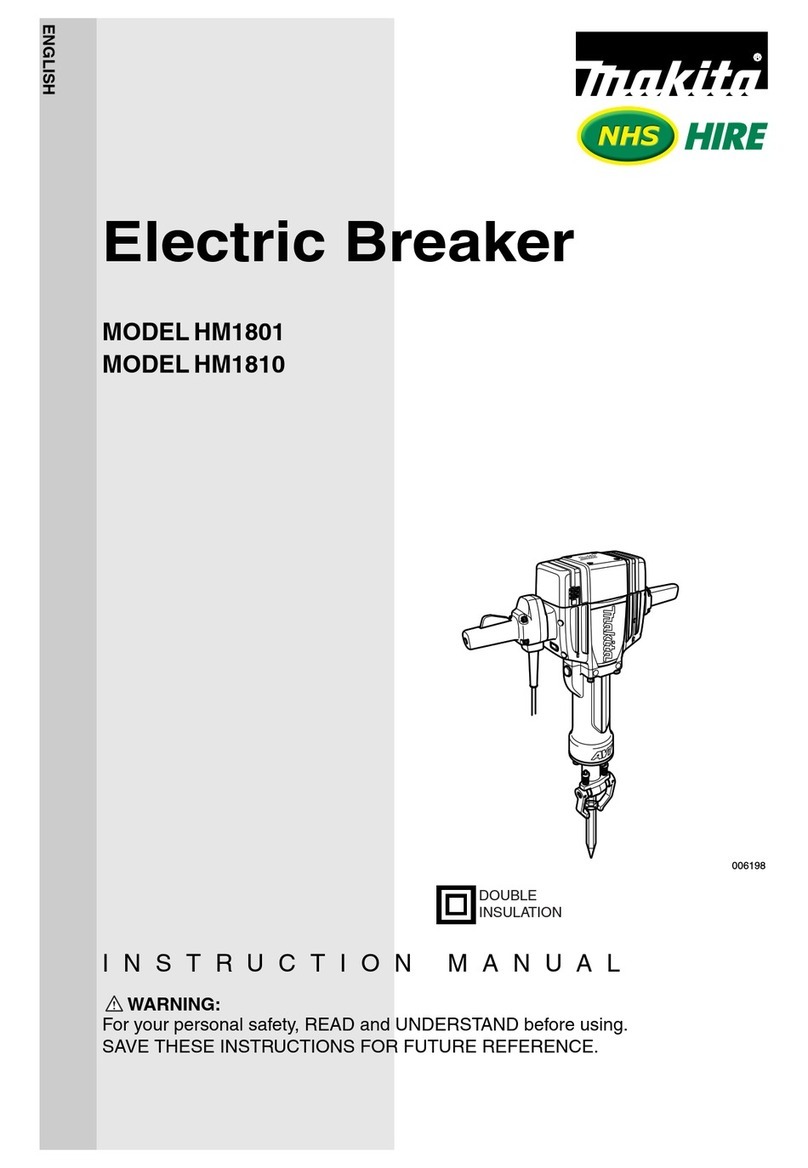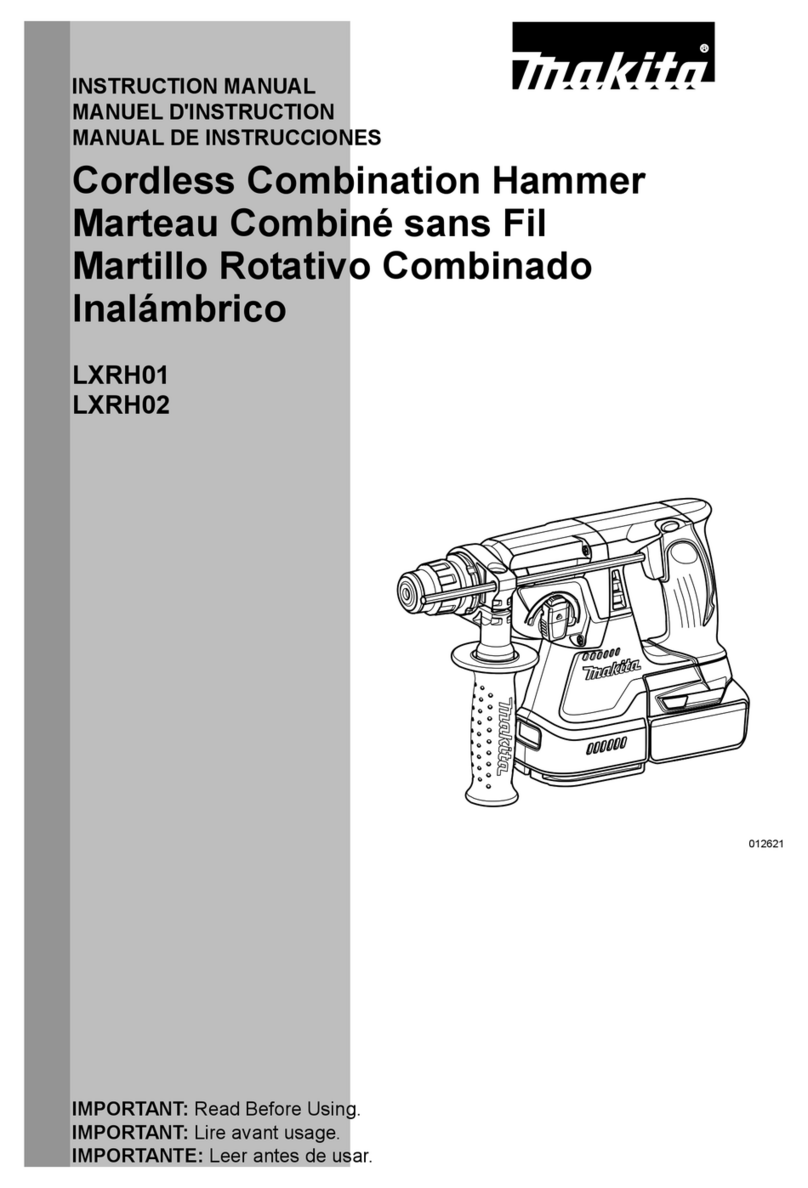Operating Instructions
To
operate
the
Makita
Model
HG
1100
Thermocou-
ple Heat Gun plug the cord into a 120 V.A.C. power
source. Be sure the power switch is in the OFF po-
sition.
The HG 1100 has a three position power switch as
shown in FIGURE 1. Be sure the unit is pointed
away from yourself and materials when turning the
unit on. In addition
to
turning the power on
to
the
unit, the switch also controls the speed
of
the blo-
wer. Selectthe desired blower speed by positioning
the switch with the forefinger.
The next step is
to
adjust the temperature
to
the
desired setting by turning the thumb wheel which
is located in the rear cap of the unit. Move the
thumb wheel in a clockwise motion for a higher
temperatureand a counter clockwise motion for a
lower temperature. The temperature range is adju-
stable from 250°
F
to
llOOo
F.
The
tool
may be used
in
a
hand held position or
in
a handsfree upright position on a flat level surface.
When using the unit in the upright position, be sure
the cord is placed in such a position that it will pre-
vent tipping the heat gun over, pulling the heat gun
off
the work surface or causing tripping over the
cord.
ImportantSafety Instructions
WARNING:
Hidden areas such as behind walls, ceilings, floors,
soffit boards, and other panels
maycontain
flammable materialsthat couldbeignit-
ed bythe heatgun
when working in these
10-
cations. The ignition
of
these materials may not be
readily apparent and could result in property dam-
age and injury
to
persons.
Do
not use if in doubt
about this hazard.
When working in these locations,keep the heat
gun moving in a back-and-forth motion. Lingering
or pausing in one spot could ignite the panelor the
material behind
it.
The heat gun should be used on
LOW temDerature
PaintStripping
Extram care should be taken when stripping paint.
The peelings, residue and vapors of
paint may
containlead,which is poisonous.
Any pre
-
1977 may contain lead and paint applied
to
ho-
mes prior
to
1950 is likely
to
contain lead. The pee-
lings and residue can be ground into floors and en-
ter the air by normal cleaning methods such as
sweeping or vacuuming. Once deposited on surfac-
es, hand-to-mouth contact can result in the inges-
tion of lead. Exposure
to
even low levels of lead
can cause irreversiblebrain and nervous system
damage; young and unborn children are particulary
vulnerable.
Before beginning any paint removal process you
should determinewhether the paint you are remo-
ving contains lead. This can be done by your local
health department or by a professionalwho used a
paint analyzer
to
check the lead contact of the
paint
to
be removed.
Lead-basedpaint
should beonly beremovedbya profes-
sionaland should not beremoved
usinga heatgun.
Paintstripping should only
be performedwith adequate ventilation, such as a
fan (in the exhaust mode) or by moving the work-
piece outdoorswhere possible.
It
is recommendedthat you use a particle mask
when stripping paint.
Failure
to
adhere
to
these precautionscould result
inthe
inhalationand ingestionof lead
which could be hazardous
to
your health.
Persons
removing paint
shouldfollow
these
guidelines
1.
Move the work piece outdoors.
If
this is not
possible, keep the work area well ventilated.
Open the windows and put an exhaust fan in
one
of
them. Be sure the fan is moving the air
from inside
to
outside.
2. Remove or cover any carpets, rugs, furniture,
clothing, cooking utensils and air ducts.
3.
Place drop cloths in the work area
to
catch any
paint chips or peelings. Wear protective clo-
thing such as extra work shirts, overalls and
hats.
4.
Work in one room at a time. Furnishings
should be removed or placed in the center of
the room and covered.Work areas should be
sealed
off
from the rest of the dwelling by sea-
ling doorways with drop cloths.
5. Children, pregnant or potentially pregnant wo-
men and nursing mothers, should not be pee-
sent in the work area until the work is done
and all clean up is complete.
6.
Wear a dust respirator mask or
a
dual filter
(dust and fume) respiartor mask which has
been approved by the OccupationalSafety and
HealthAdministration
(OSHA),
the National In-
stitute of Safety and Health
(NIOSH),
or the Uni-
ted States Bureau of Mines. These masks and
replaceablefilters are readily available at major
hardware stores. Be sure the mask fits. Beards
and facial hair may keep masks from sealing
properly. Change filters often.
Disposable
paper masksare notadequate.
7.
Use caution when operating the heat gun. Keep
the heat gun moving as excessive heat will ge-
neratefumes which can be inhaled by the ope-
rator.
8.
Keep food and drink out of the work area.
Wash hands, arms and face and rinse mouth
before eating or drinking.
Do
not smoke or
chew gum or tobacco in the work area.
9.
Clean up all removed paint and dust by wet
mopping the florrs. Use a wet cloth
to
clean all
walls, sills and any other surface where paint
or dust ic clinging.
Do notsweep, dry
dust or vacuum.
Use a high phosphate de-
tergent or trisodium phosphate (TSP)
to
wash
and mop areas.
10. At the end of each work session put the paint
chips and debris in a double plastic bag, close
it with tape or twist ties, and dispose of proper-
ly.
11
Remove protective clothing and work shoes in
the work area
to
avoid carrying dust into the
rest of the dwelling. Wash work clotehs separa-
tely. Wipe shoes
off
with a wet rag that is then
washed with the work clothes. Wash hair and
body thoroughly with soap and water.
I
Outlet
nozzle
I
Adjustable
temperature
I
Technical
data
HG
1100
Temperature: Variable adjustment
250' F
-
1100
O
F
Watts: 200
-
1500 watts
Amps: 12.5
Supply voltage: 120VAG
Air Flows:
Lo
8 CFM
Hi 14 CFM
Features
0
Balanced, lightweight design.
0
High-impact plastic housingfor lasting durability
0
Heating element is ceramic encapsulatedfor du-
0
Heat time isjust 50 seconds
0
No
"cool down" cycle required
0
Variable temperature adjustment
0
Two speed airblower
rability and longer life
22897
Thermocouple
Heat
Gun
I
I
Model
HG
1100
Operator's
Use
&
Care
